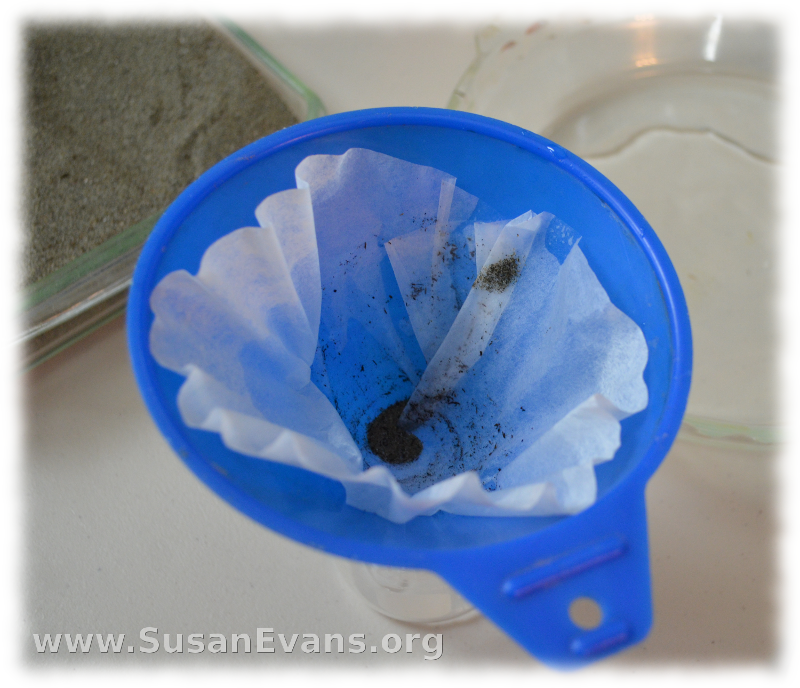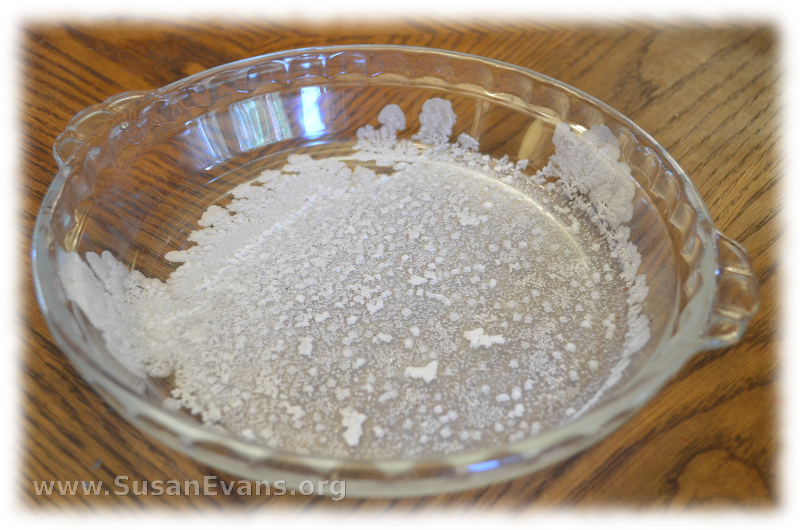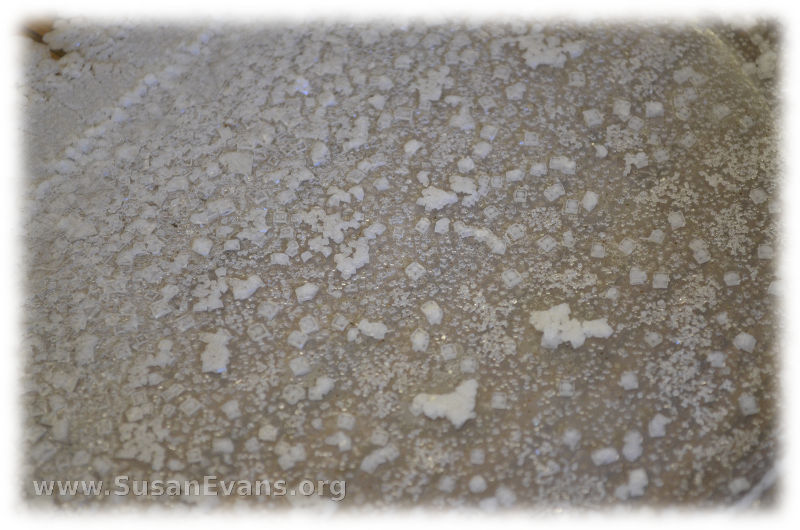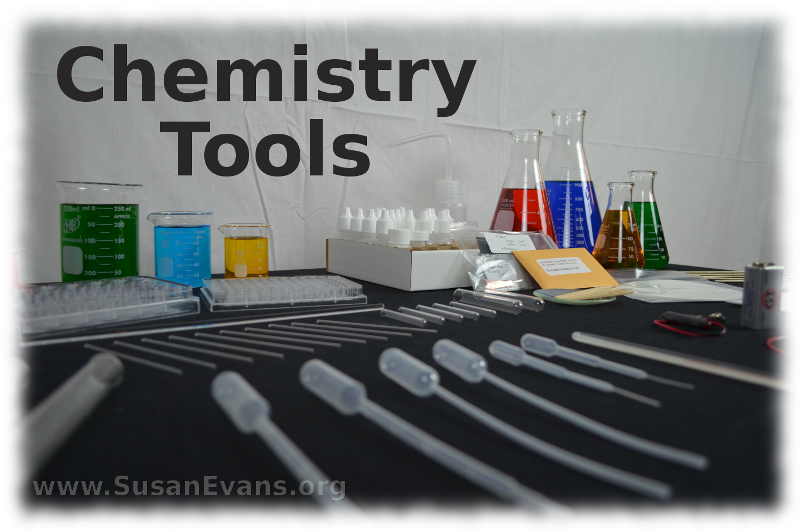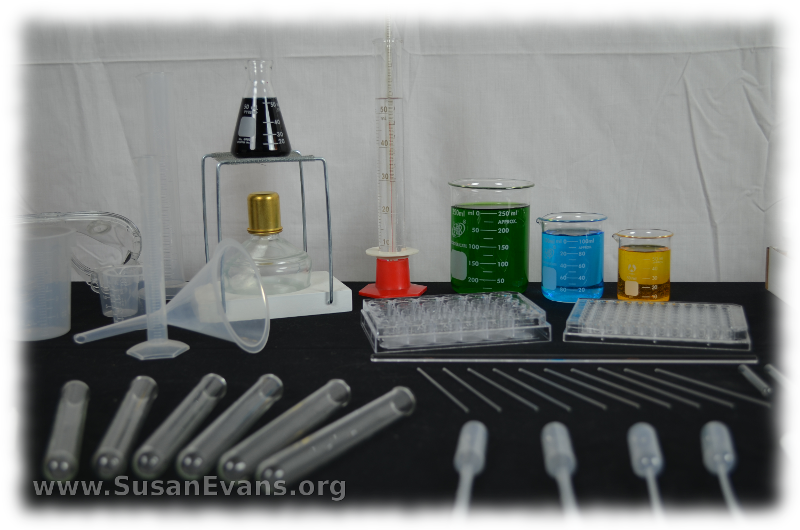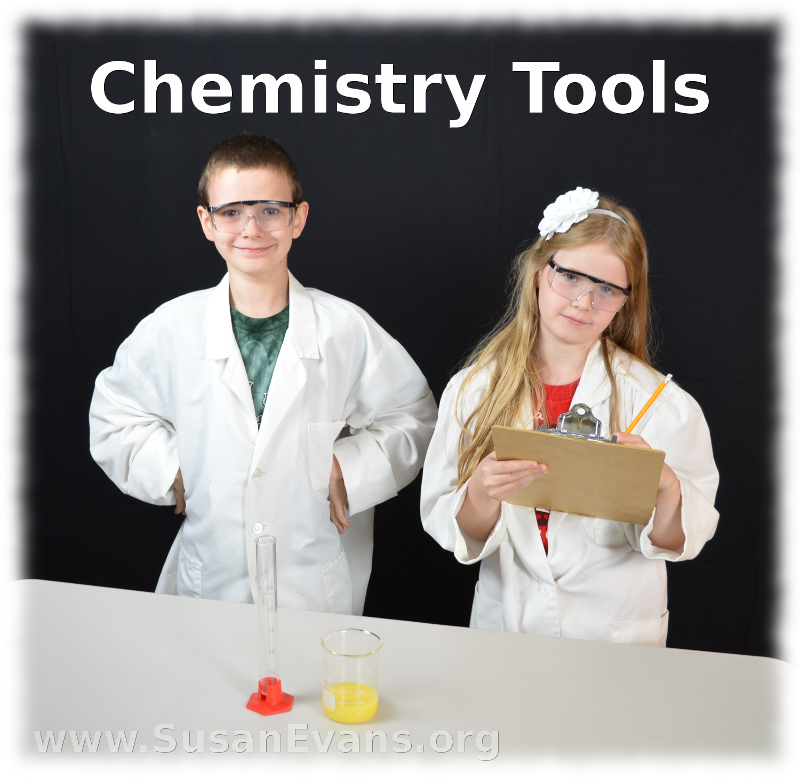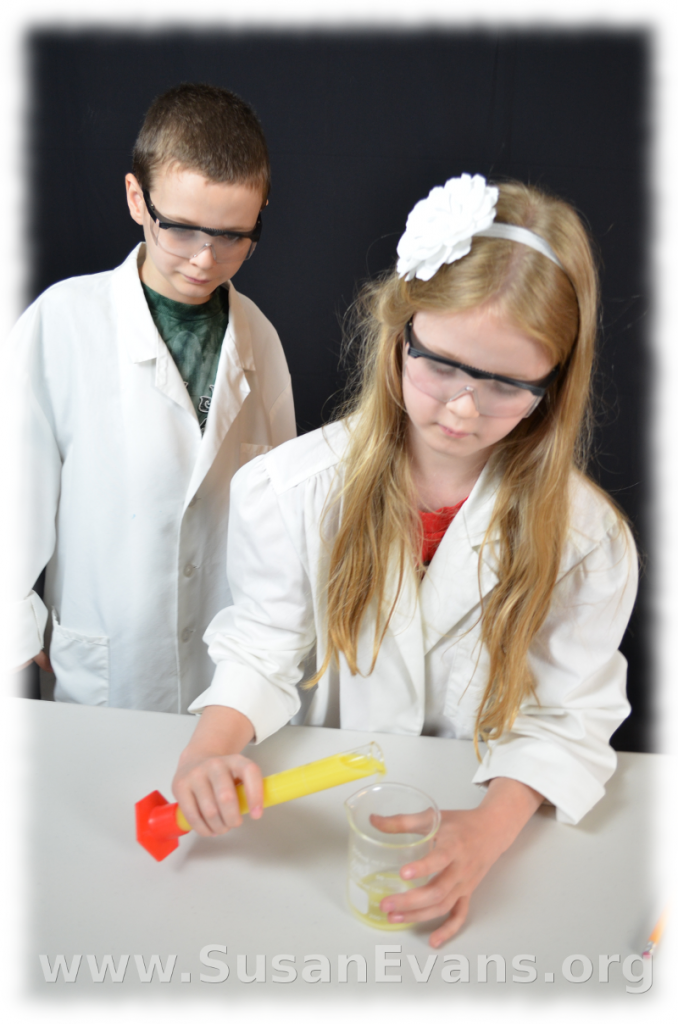This post contains affiliate links. I was compensated for my work in writing this post.
Today we will be identifying mixtures and compounds by looking at different substances and trying to figure out if the ingredients are chemically bonded together or not. My younger two children are using Christian Kids Explore Chemistry by Bright Ideas Press, and this is one of the fun experiments in the book.
You will want to take out 6 bowls and make 6 labels. 3 by 5 cards folded length-wise are perfect for the labels. You can write with a black marker the following mixtures and compounds:
- mustard mixture
- sand/salt mixture
- sugar compound
- salt compound
- water compound
- water/oil mixture
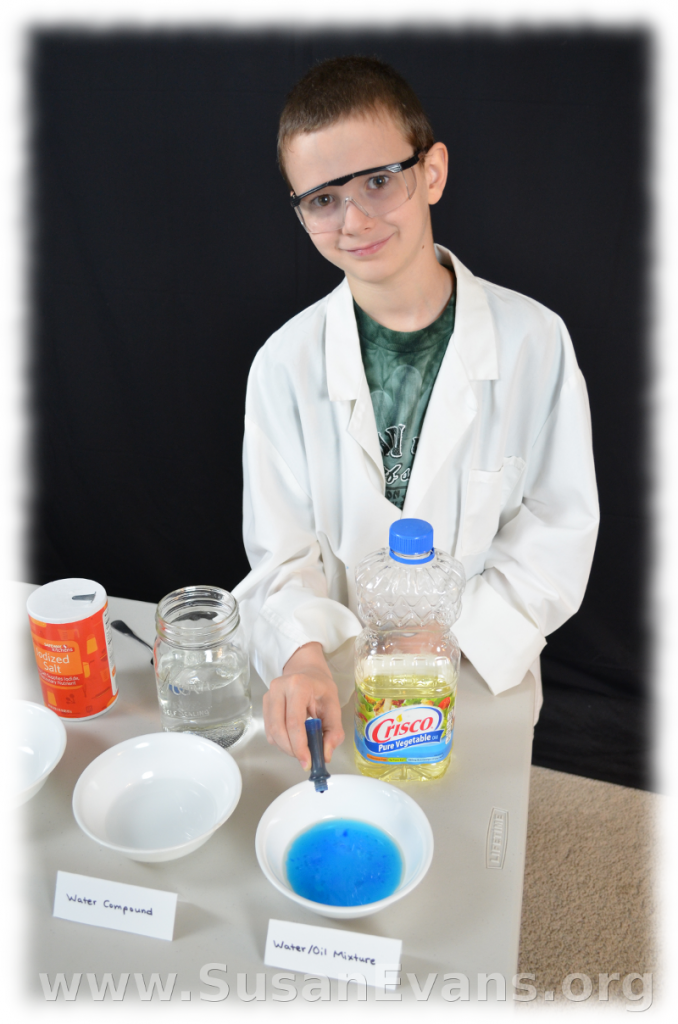 Go ahead and examine each of the mixtures and compounds to figure out why they are mixtures and compounds. The hardest one for my kids was the mustard. They thought it was a compound because it looked like one substance, but mustard is made up of different powdered ingredients (solids) and water. There is no chemical bond between the ingredients, which is why it is a mixture.
Go ahead and examine each of the mixtures and compounds to figure out why they are mixtures and compounds. The hardest one for my kids was the mustard. They thought it was a compound because it looked like one substance, but mustard is made up of different powdered ingredients (solids) and water. There is no chemical bond between the ingredients, which is why it is a mixture.
Sand and salt don’t chemically bond together when placed in a bowl, so that one was obviously a mixture. The sugar, salt, and water were obviously compounds because the elements combined chemically to produce a new substance.
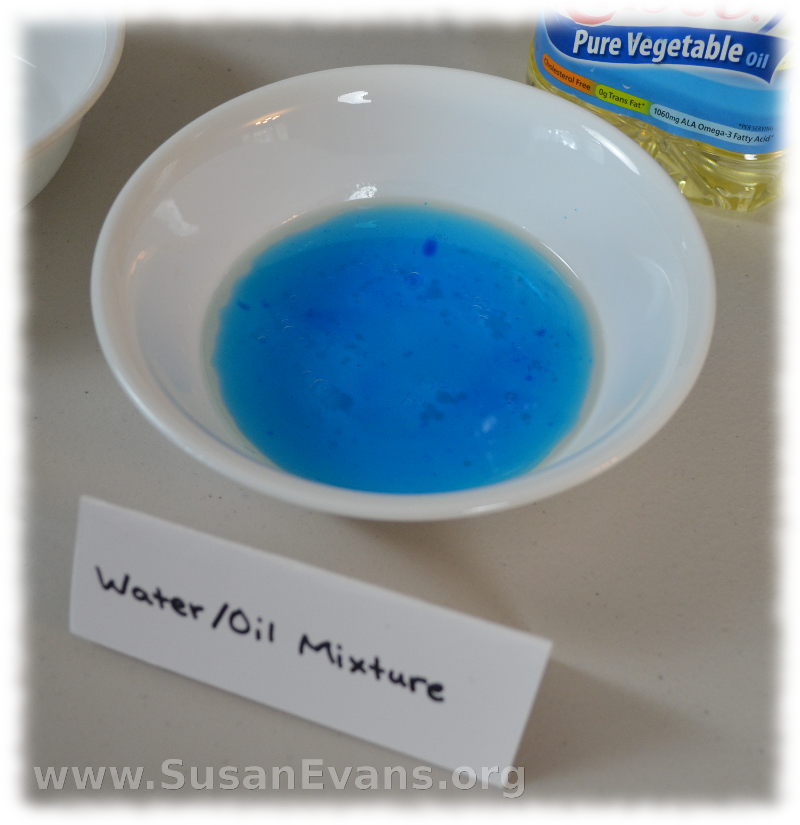 Last but not least was the water/oil mixture. We poured water and oil into a bowl, and they definitely didn’t combine into a new substance. In fact, they remained as separate as ever! We tinted the water blue to show how the water (blue) and the oil (light yellow) are not even wanting to mingle together. You can see in the video that something unexpected happened with this last mixture, which resembled fireworks!
Last but not least was the water/oil mixture. We poured water and oil into a bowl, and they definitely didn’t combine into a new substance. In fact, they remained as separate as ever! We tinted the water blue to show how the water (blue) and the oil (light yellow) are not even wanting to mingle together. You can see in the video that something unexpected happened with this last mixture, which resembled fireworks!
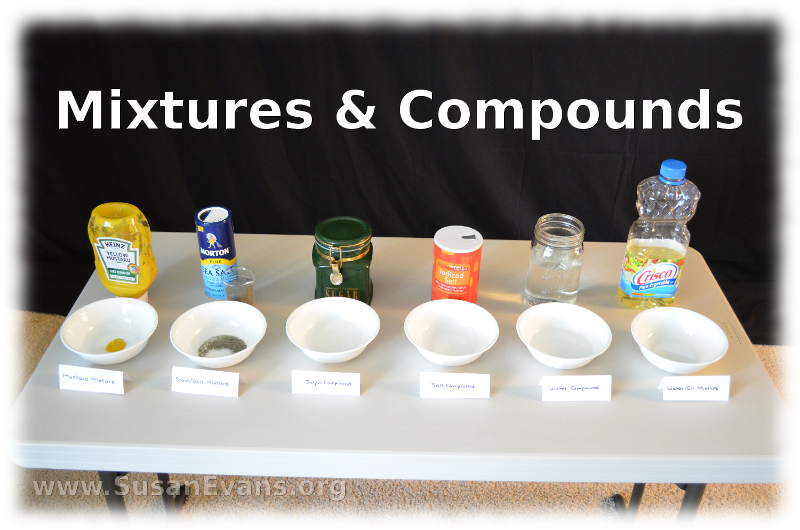


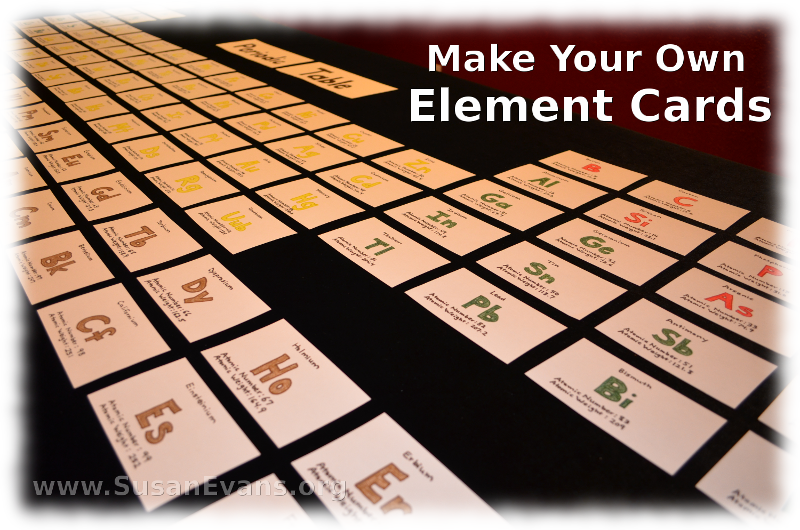

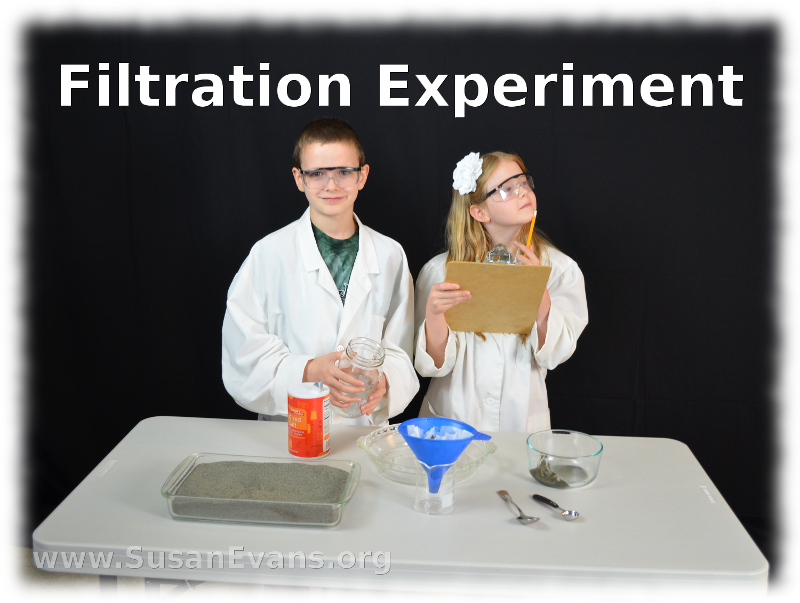
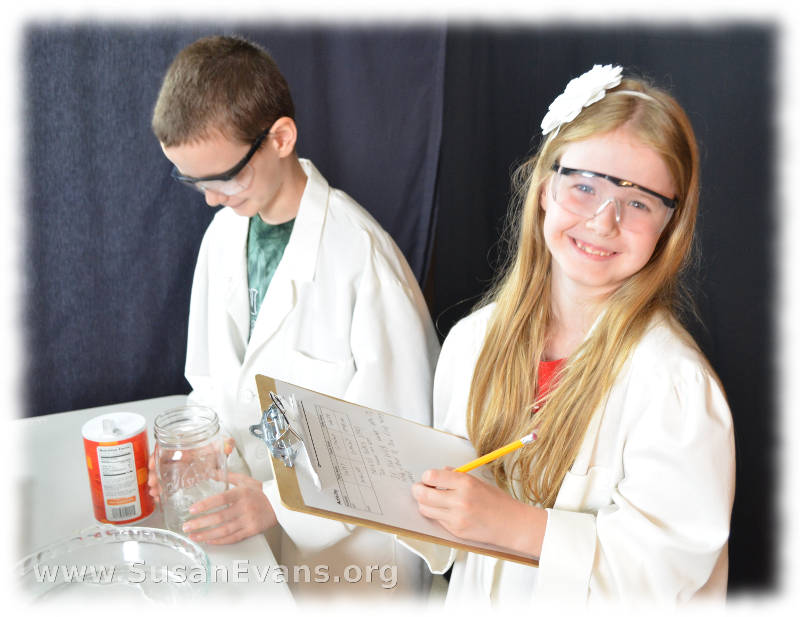
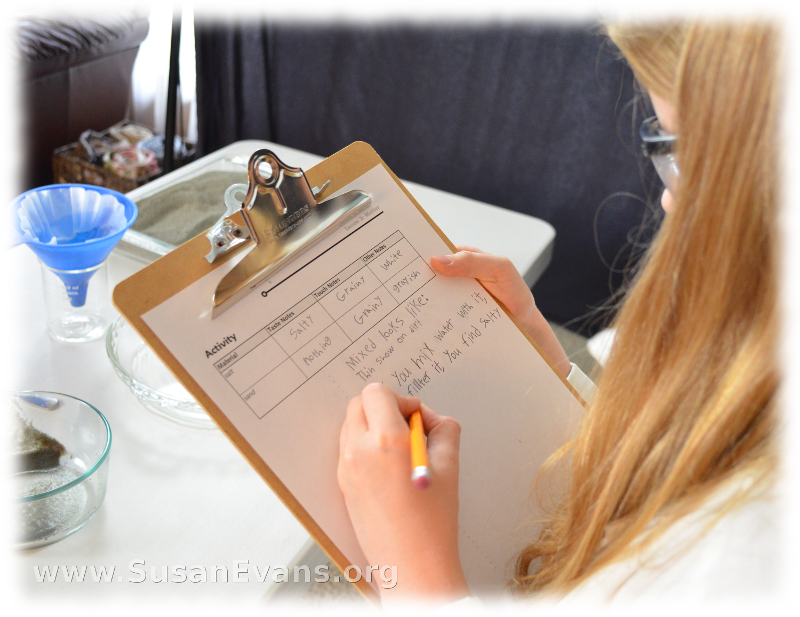
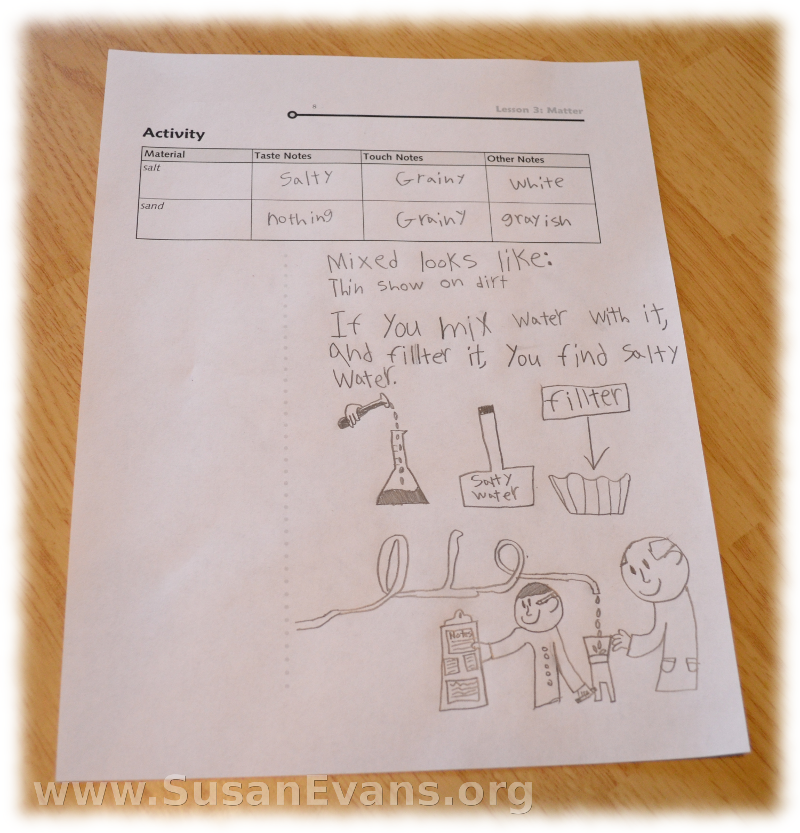 Now mix the salt and the sand together with a spoon. This is called a mixture. Pour 100ml of water into the salt/sand mixture, and stir for 60 seconds until the salt has dissolved.
Now mix the salt and the sand together with a spoon. This is called a mixture. Pour 100ml of water into the salt/sand mixture, and stir for 60 seconds until the salt has dissolved.